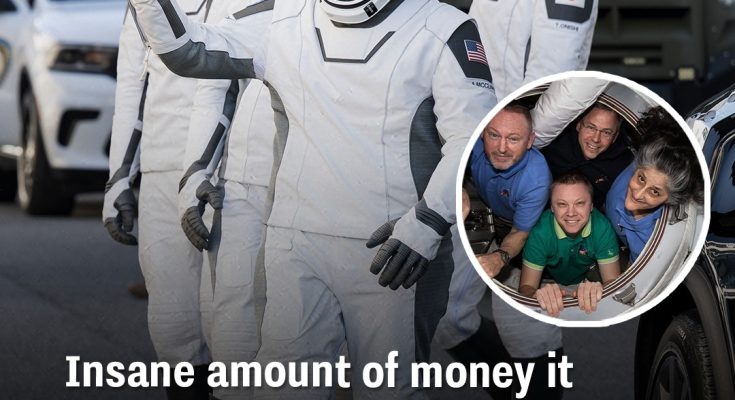The Falcon 9 successfully lifted off from Kennedy Space Center in Florida at 7:04 p.m. EDT on Friday (14 March), marking the long-awaited rescue mission for NASA astronauts Barry ‘Butch’ Wilmore and Sunita ‘Suni’ Williams.
Onboard the Dragon capsule are Crew-10’s four astronauts: NASA’s Nichole Ayers and Anne McClain, Roscosmos astronaut Kirill Peskov, and Japan Aerospace Exploration Agency’s Takuya Onishi.
Following a couple of days handover, Williams and Wilmore are due back on Earth after an unexpectedly long mission.
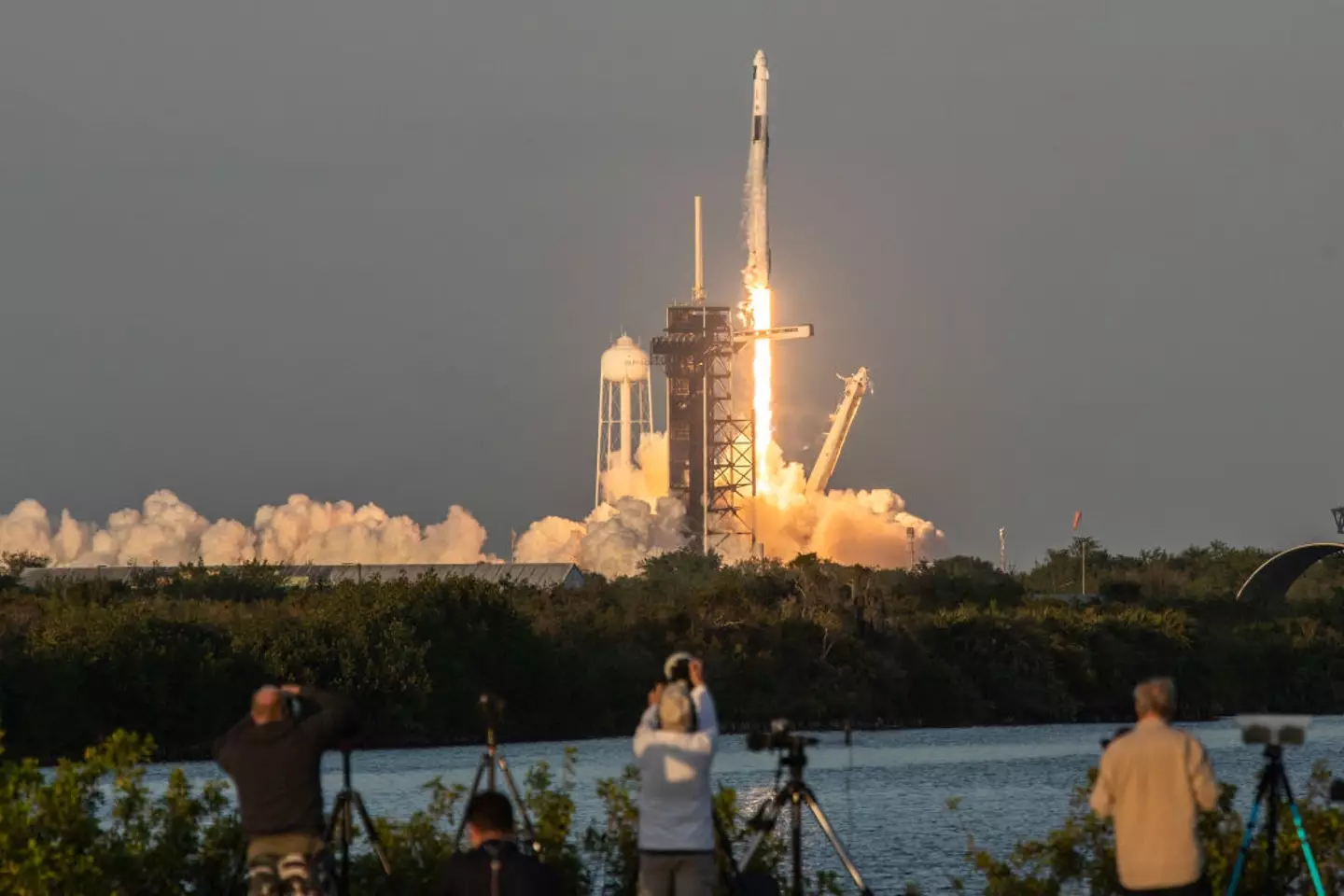

The Falcon 9 blasted off on Friday. NurPhoto / Contributor / Getty
SpaceX had originally planned to launch the Falcon 9 rocket and Dragon spacecraft in February before being pushed back until March.
Both missions were aborted last minute due to technical issues with the rocket’s clamp arm and hydraulics of the launch tower, respectively.
However, third time lucky, everything went as planned as many watched the Falcon 9 blast off on Friday.
Wilmore and Williams are to be transported home with another American astronaut and a Russian cosmonaut aboard a SpaceX Crew Dragon craft, which arrived at the ISS early on Sunday.
Now that Wilmore and Williams are finally heading home, you might be wondering – how much did this mission actually cost?
Getting to orbit has become more cost-efficient over the years, thanks to reusable rockets and advancements in spaceflight technology. However, when human passengers are involved, things get considerably more expensive.
Turns out, according to Wikipedia, standard Falcon 9 launch costs around $69.75 million as of 2024.

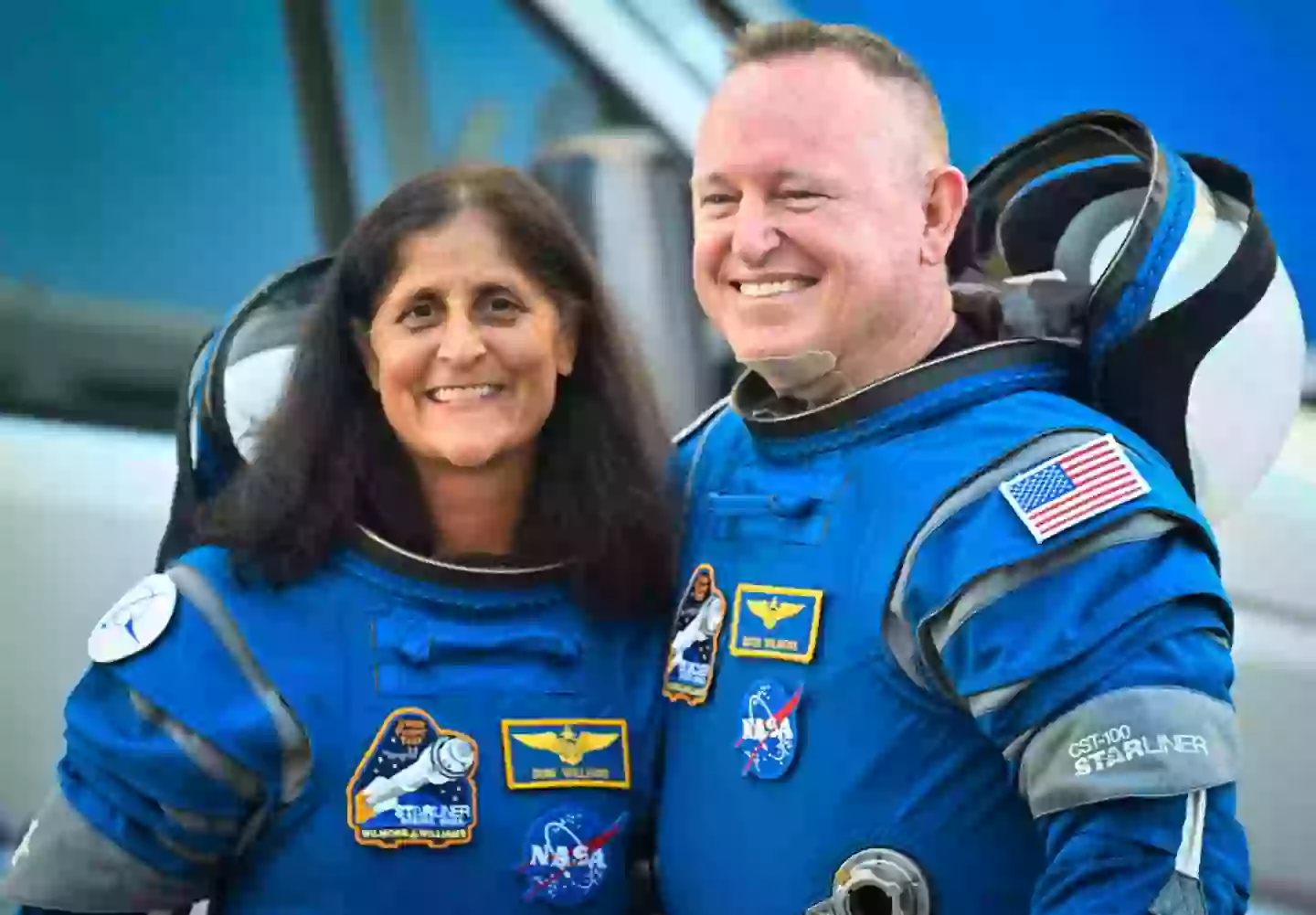
Williams and Wilmore have been stranded on the ISS for over nine months. MIGUEL J. RODRIGUEZ CARRILLO / Contributor / Getty
But when you add the Crew Dragon capsule, which is necessary for carrying astronauts, the cost jumps to approximately $140 million per launch.
Why’s that?
Well, the Crew Dragon capsule increases the total mass of the rocket, meaning there is less room for cargo. The spacecraft is also packed with extra safety systems, life support and human-rated components, which drive up costs.
The Falcon 9 is capable of carrying a little over 13,000 pounds when human passengers are onboard.
To put it into perspective, the cost per pound for a crewed launch is about $10,000.
The cost of launching a rocket isn’t cheap – and probably never will be.
But with the combined efforts of private and public space explorers, launches have become more cost-effective.
For example, Elon Musk’s space company has made multiple missions possible with the same hardware by exploring reusable rockets.
Meanwhile, Jeff Bezos’ Blue Origin has developed two reusable rocket systems: the New Shepard for suborbital flights and the New Glenn for orbital missions, both designed for vertical take-off and landing.
Featured Image Credit: NASA / Handout / Getty


Sunita Williams and Butch Wilmore are one step closer to making it home, with their nine-month stay aboard the International Space Station finally coming to an end.
Although the pair of NASA astronauts were only supposed to be in space for eight days, issues with their Boeing Starliner meant they were marooned on the ISS until a relief crew could come and take over their duties.
The pair have become a media sensation, with President Donald Trump telling Elon Musk to go get them, while the tech billionaire then accused the Biden administration of ‘abandoning’ them for political reasons.
NASA fast-tracked their rescue, and just when it looked like things were going smoothly, a March 12 mission was called off at the last minute. A subsequent flight was canceled due to adverse weather conditions, but making it third time lucky, SpaceX’s Crew-10 finally blasted off. Around 29 hours later, the craft docked with the ISS, and there were emotional scenes as Williams and Wilmore finally realized they were going home.

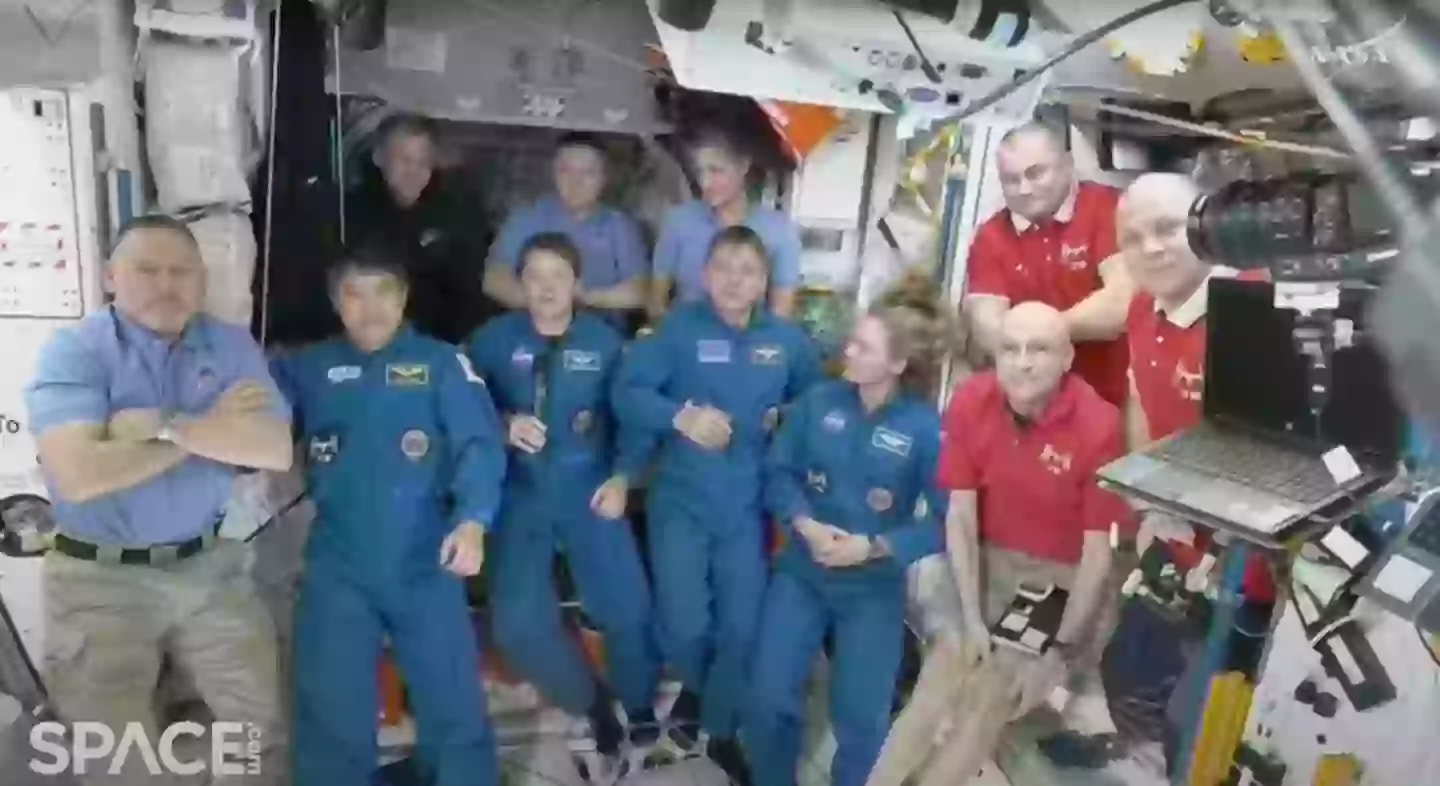
There were happy scenes as Crew-10 joined the ISS (NASA)
At 12:04 a.m. EDT on March 16, commander Anne McClain, pilot Nichole Ayers, JAXA (Japan Aerospace Exploration Agency) astronaut Takuya Onishi, and Roscosmos cosmonaut Kirill Peskov docked and then entered the ISS’ orbital lab.
Onishi was the first through the hatch, followed by Peskov, Ayers, and then McClain. It was all smiles as the Crew-10 crew settled into their new digs, allowing Williams, Wilmore, and Crew-9 astronauts Nick Hague and Aleksandr Gorbunov to soon head home.
In a live video beamed from the ISS, McClain said: “Hi everybody down there on Earth. Crew-10 has had a great journey up here, about 28 hours to get back up to the space station. And I cannot tell you the immense joy of our crew when we looked out the window and saw the space station for the first time.
“You can hardly even put it into words, orbiting the Earth for the last couple of days, it has been absolutely incredible.”
Crew-10 is scheduled to remain on the ISS for the next six months.
Williams gave a short but sweet response to the arrival, saying: “Houston, thanks for tuning in this early morning, it was a wonderful day, great to see our friends arrive, so thank you so much.”
People in the comments were equally touched, with one person writing: “What an amazing time to be alive. Thank you SpaceX and all communities involved!.”
Another added: “Gravity or no gravity, hugging another person remains the most priceless gesture.”
A third concluded: “Tears of joy, watching them embrace!”
With a few days of handover, Williams and Wilmore are set to depart the ISS on Wednesday (March 19) and have a quick hop back to Earth where they’ll be rushed off on a stretcher and quickly put into a ‘brutal’ regime of recovery.
If all goes as plan, the pair of marooned astronauts will have been in space for a jaw-dropping 286 days. We’d like to say they’ll be paid handsomely for their extra time in the stars, but unfortunately, they won’t.
Featured Image Credit: VideoFromSpace / YouTube


A pair of NASA astronauts are set to return home after nine months of being stranded in space.
The US space agency announced that Barry ‘Butch’ Wilmore and Sunita ‘Suni’ Williams are to be transported home with another American astronaut and a Russian cosmonaut. The rescue crew arrived at the International Space Station (ISS) early on Sunday (16 March) aboard a SpaceX Crew Dragon craft.
This marks the end of an unexpectedly extended stay for Wilmore and Williams, who initially travelled to the ISS in June 2024 for what was supposed to be an 8-day mission.
However, technical issues forced the capsule to return to Earth without them last September – leaving them stranded nine months longer than expected.
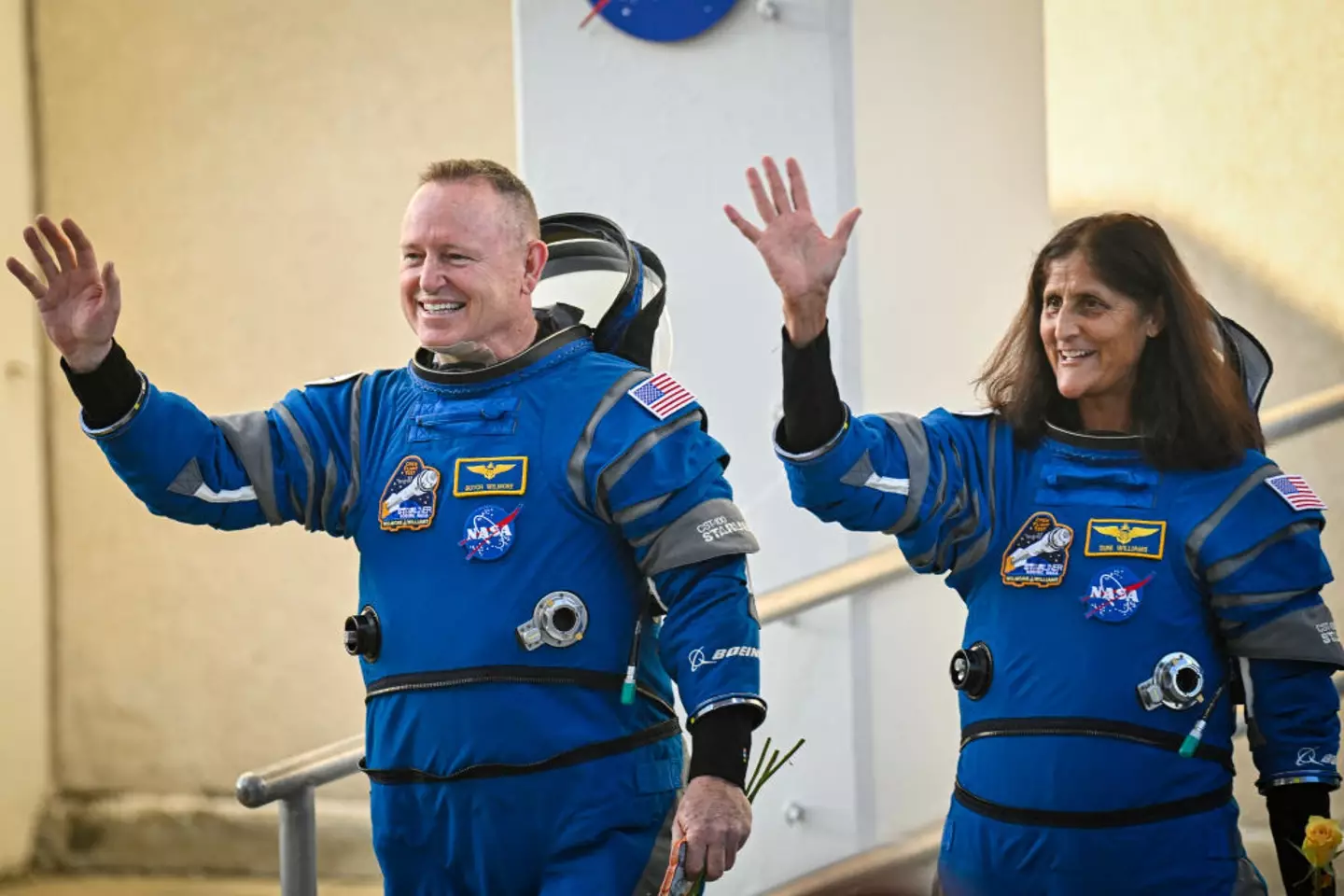

NASA’s Butch Wilmore and Suni Williams have been stranded on the ISS for over nine months (MIGUEL J. RODRIGUEZ CARRILLO / Contributor)
Although their stay is still shorter than the US space record set by Frank Rubio at 371 days in 2023, or the world record of 437 days held by Russian cosmonaut Valeri Polyakov aboard the Mir space station.
NASA originally planned a rescue mission in February, but the launch was delayed due to technical issues with a rocket clamp arm.
Then, on 12 March, a new attempt was made to launch a SpaceX Falcon 9 rocket and Dragon spacecraft from Kennedy Space Center in Florida to retrieve them.
But at the last minute, Elon Musk’s space company announced that it had aborted plans due to an issue with the hydraulic system of the launch tower.
Now, after a successful launch, NASA said the crew is expected – including NASA’s Nick Hague and Roscosmos cosmonaut Aleksandr Gorbunov – to hit the Florida coast at approximately 5:57 p.m. (21:57 GMT) on Tuesday. This is one day earlier than initially planned as the weather conditions have proved more favourable.


The SpaceX Falcon 9 rocket lifted off at the Kennedy Space Center on Friday (NurPhoto / Contributor / Getty)
“The updated return target continues to allow the space station crew members time to complete handover duties while providing operational flexibility ahead of less favourable weather conditions expected for later in the week,” the space agency said.
The journey is to be broadcast live from Monday evening when hatch closure preparations begin.
The long stay – which required NASA to send them extra clothing and personal supplies – has caused the pair to spend Thanksgiving and Christmas on the outpost away from their families.
Meanwhile, some are worried about Williams and Wilmore’s health states after photos were released showing their gaunt physical appearance.
In response to the concern, NASA has reassured everyone that they’re both okay – but their biggest challenges might still be ahead of them.
